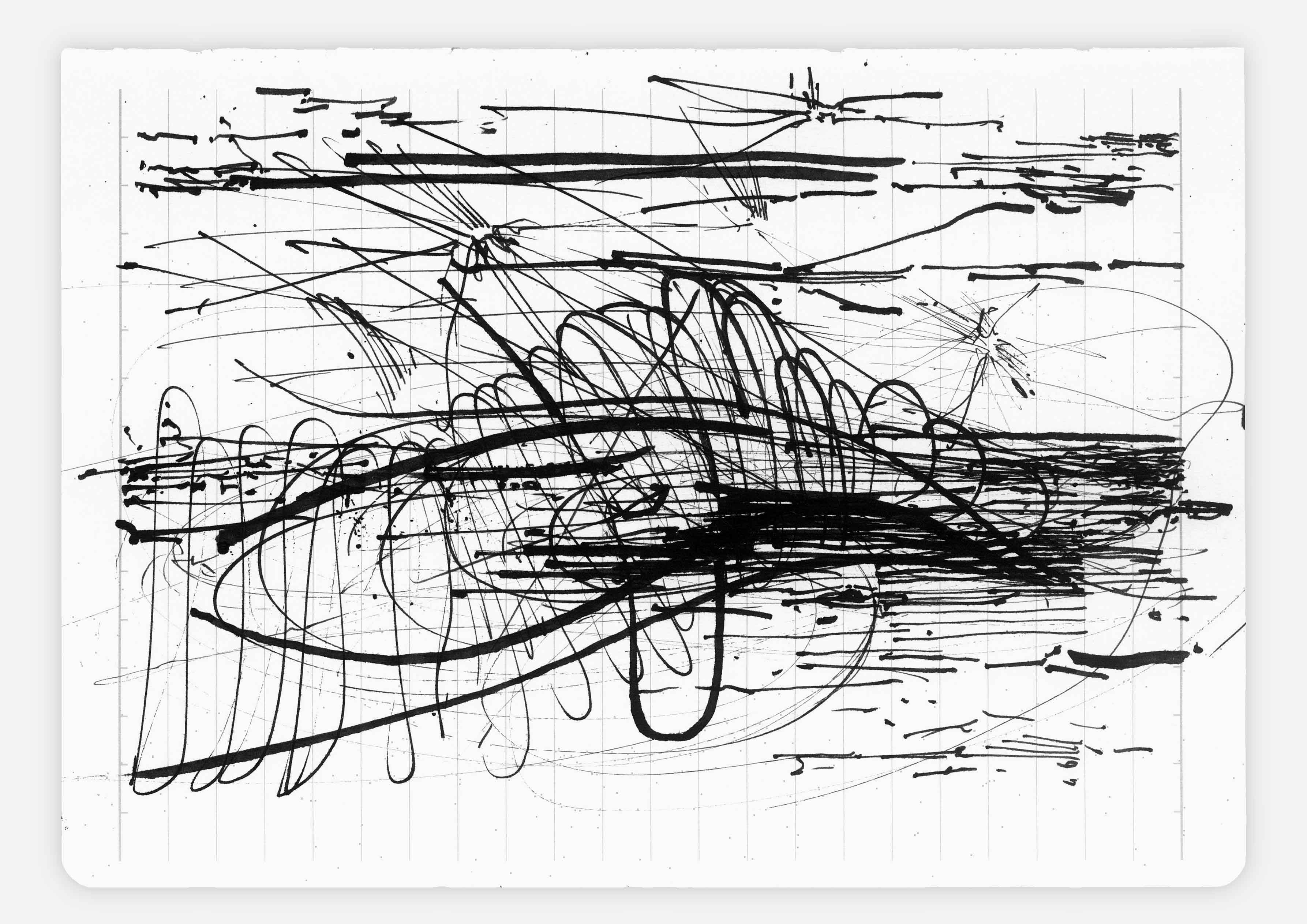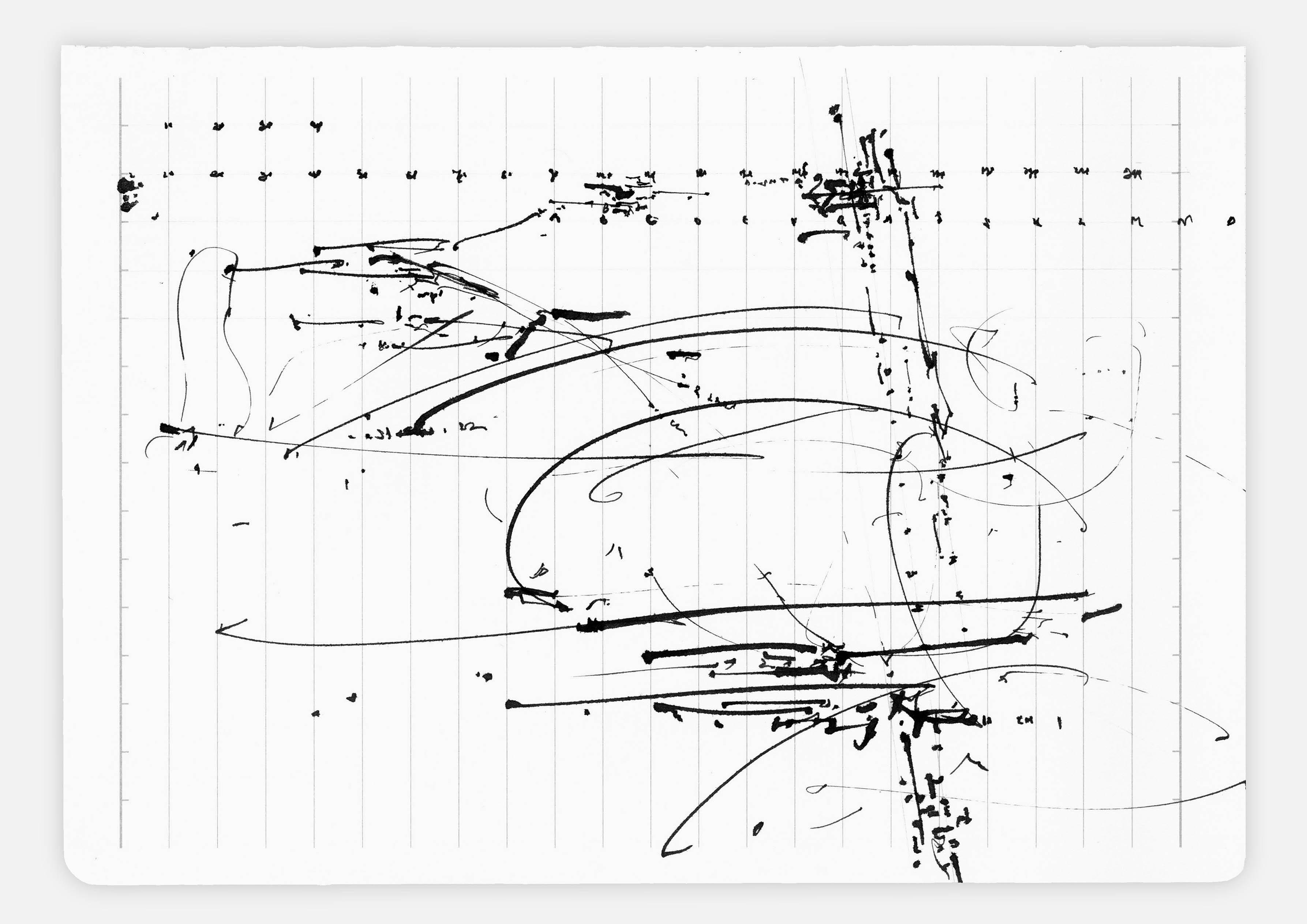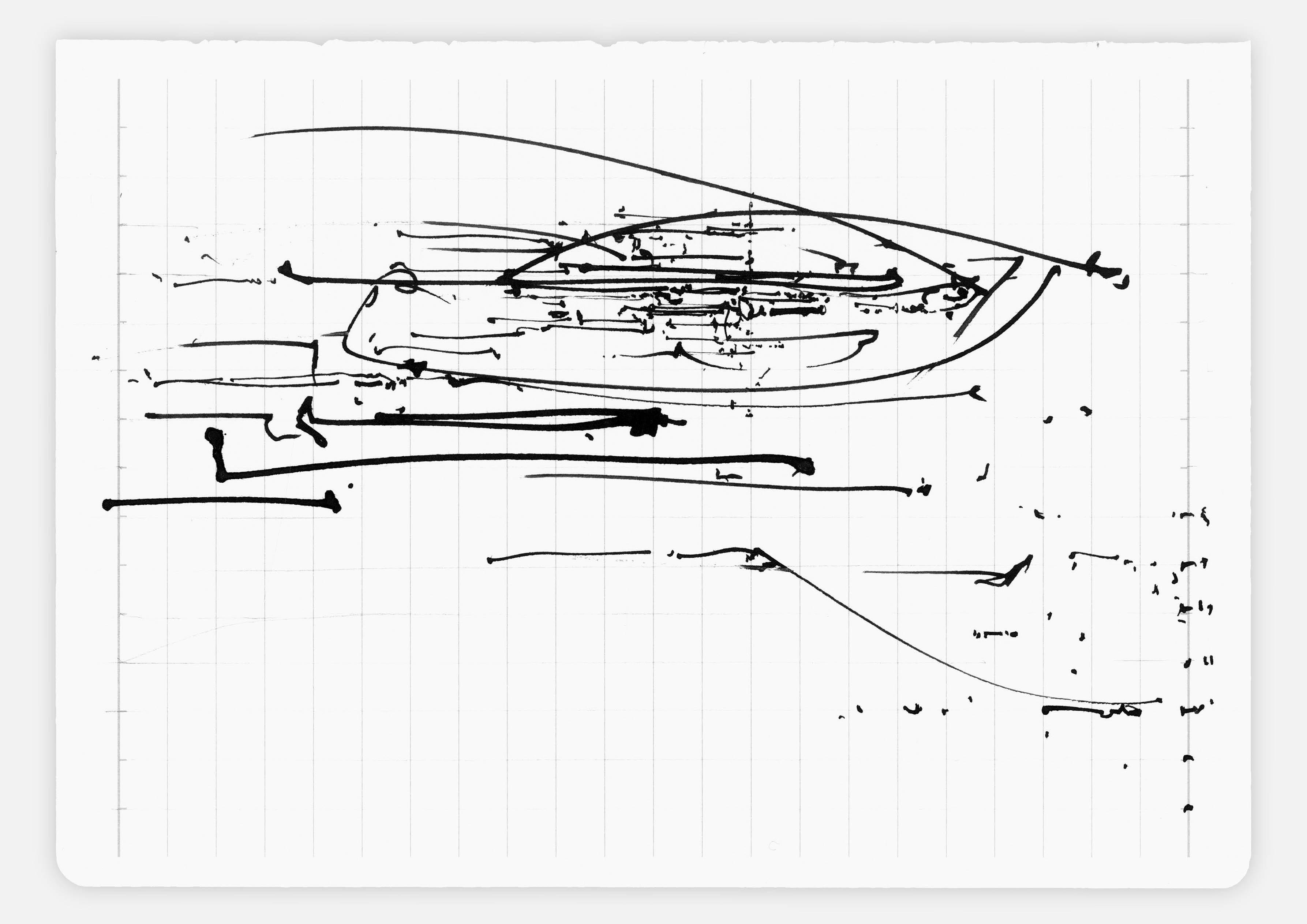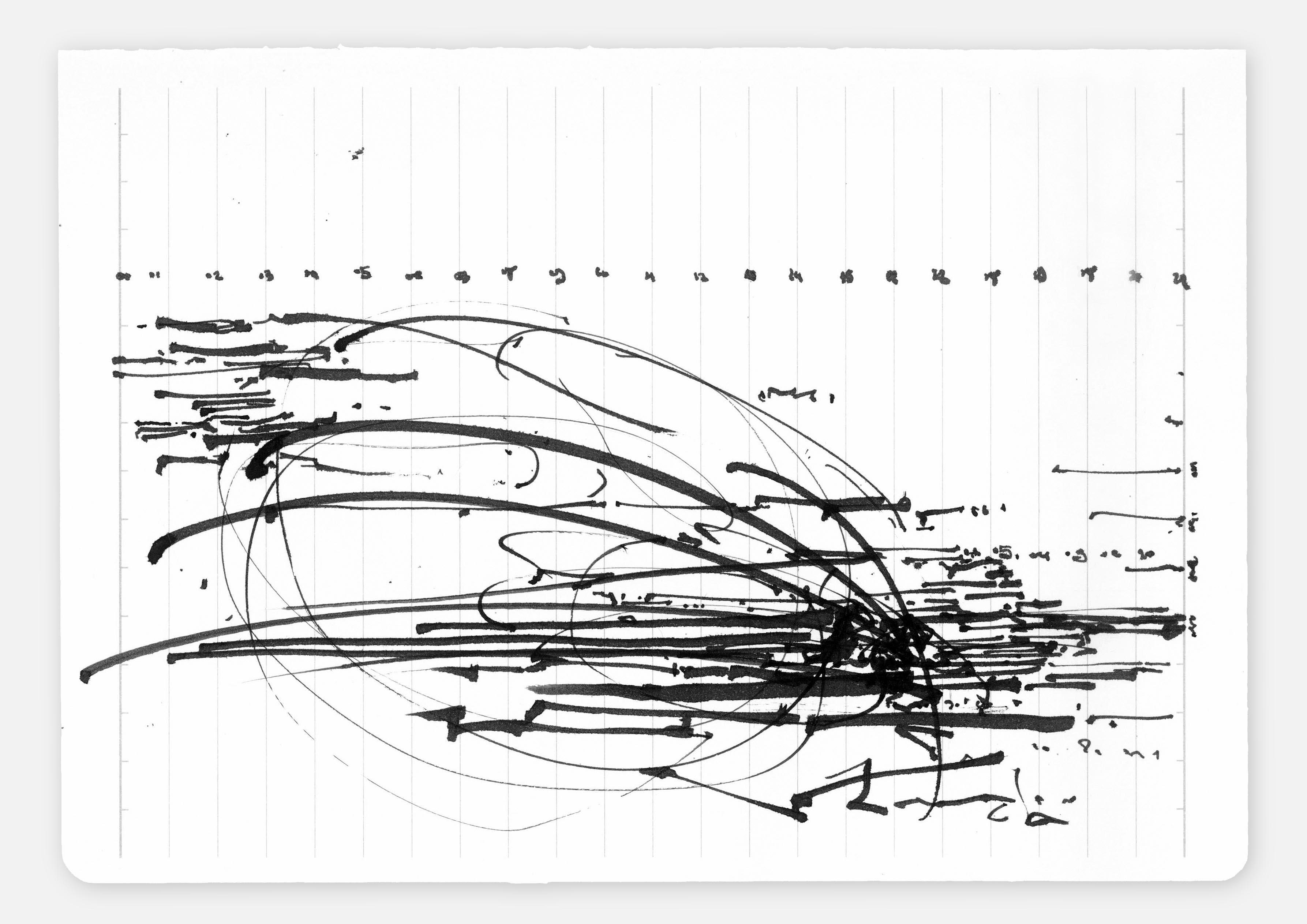New York Diaries II, 2013
Fotis Sagonas
During my stay in NY City as a Fulbright artist I have worked on Urban Diaries. My intention was to represent the nexus between the everyday and the built environment, establishing an invisible passage between the past and the future.
 New York Diaries II, 2013
New York Diaries II, 2013
ink on paper, 10.5 x 14.8 cm
The persistence of the notion of historicity, as an inevitable condition of the linkage between the past and the future can lead to very interesting paths, especially when we are talking about the contemporary landscape of the United States and how it has been shaped. In its fundamental ambiguity towards the new space, America was well behind of Europe. In fact, the first moment that we meet a comparable analysis is in 1984 with Fredric Jameson’s essay on postmodernism where he describes the new space as uninhabitable. In total contrast to Europe, post-war USA undoubtedly boomed; more precisely during the period that the basic shape of Europe was composed of deserted streets, unused warehouses, waste ground and demolished cities, the basic shape of USA was put in place: shopping malls, inter-state freeways and sprawling suburbs – all this elements that define the landscape of middle America today. It is what Hitchcock captures in his cinema – a cinema of the motel, of shopping mall, of what Auge defines as a ‘non-place’ or of what Koolhaas calls ‘junk space’. Are those moments in science fiction when humans land on an alien planet describe it as strange and dystopic and never think it might be they who are out of space.
 New York Diaries II, 2013
New York Diaries II, 2013
ink on paper, 10.5 x 14.8 cm
 New York Diaries II, 2013
New York Diaries II, 2013
ink on paper, 10.5 x 14.8 cm
Following this reflection, in his essay on postmodernism, Jameson argues that new space, like the new machines, can be represented only in motion. However, the fact that he describes his experience in the Bonaventure Hotel as an out-of-control roller-coaster, as a deep immersion into hyperspace, reveals another hypothesis: Maybe is the subject that must be represented in motion, not space.
 New York Diaries II, 2013
New York Diaries II, 2013
ink on paper, 10.5 x 14.8 cm
 New York Diaries II, 2013
New York Diaries II, 2013
ink on paper, 10.5 x 14.8 cm
In New York Diaries II the narrator is precisely this subject in motion that attempts to describe how the habitation of space in New York feels. The representation of this feeling – with “feel” I mean to see with the mind and think through the eye – is “actualized” through a process of un-mapping which abounds an assemblage of points and lines, and between these, passages of variation (or ‘becoming’). Therefore, the work has a milieu from which it extracts new fields for analysis, but no centre: it has no margins or end, but ‘cutting edges of de-territorialisation’ that tend to keep out the world – to be almost a world within itself.

New York Diaries II, 2013
ink on paper, 10.5 x 14.8 cm
